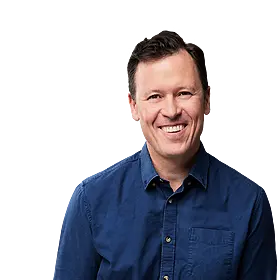Facebook's new dislike button might actually be a hug.
Zuckerberg has said the new button will be designed to allow people show empathy for a friend who has had something difficult to share.
In answer to the first question at a Townhall Q&A at Menlo Park, Zuckerberg revealed some details about the social network's new plans. And though the function remains shrouded in mystery, his response makes it clear it is not a 'dislike' button.
Zuckerberg said: "Not every moment is a good event. If you are sharing something that is sad like the current refugee crisis, or the loss of a family member... I do think it's important to give people options other than just 'like'".
The company CEO said today that Facebook is almost ready to test the new function, which has been surprisingly difficult to design.
A quick look at Facebook though and you will see why Zuckerberg feels an 'empathy' function is needed.
Without it, there seems no appropriate way to respond to posts like some of these well known stories from recent weeks.
*WARNING: some of the images below might upset people*
The Cincinnati woman who posted a selfie of her family standing beside their Dad's corpse.
He had died as a result of heroin addiction.
Her story went viral in recent days.

Photo: Eva Holland on Facebook
The Canadian couple who posted a picture from the steps of a courthouse after their divorce was finalised.

Photo: Shannon and Chris Neuman on Facebook
When 3-year-old Syrian refugee Aylan Kurdi was found dead on a beach in Turkey, a photographer took his picture.

Aylan Kurdi Photo: Dogan News Agency
Tima Kurdi, the boys' aunt was among the Facebook users who shared Aylan's photograph.
Death is probably the most difficult of all the human experiences for us to respond too, and that is true of Facebook just as in real life.
When TV station employees Alison Parker and Adam Ward were shot dead by their former colleague Vester Flanagan, Flanagan used the network to share images from the scene of the killing.
They were quickly removed, and the most appropriate reaction was not to share his images.
But how to react to the other Facebook reports about the tragic deaths? How to show support? Like?
Bridgewater Plaza is holding an event Saturday to honor the lives of Alison and Adam, and to encourage the continued healing of Vicki Gardner. A permanent memorial will be dedicated at noon.
Posted by WDBJ7 on Tuesday, September 15, 2015
The saddest example here was the tragic death of six Irish J1 students in a balcony collapse in Berkeley, California.
Seven others sustained injuries in the disaster.
Rest in peace Lorcan.
Posted by Irish students Berkeley tragedy - California on Thursday, June 25, 2015
People felt a genuine need to empathise with families of those who had died, as well as with the survivors.
Huge crowds attended vigils and fundraisers, but there was a need to reach out to each other across social media too.
No tool could have helped express the grief the nation felt, but at least an empathy button on Facebook would have helped.









